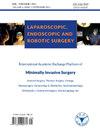腹腔镜输卵管结扎与输卵管切除术用于永久避孕的围术期和术后并发症:ACS-NSQIP分析
IF 2
Q3 Medicine
引用次数: 0
摘要
目的输卵管切除术和输卵管结扎术是妇女永久避孕的常用方法。输卵管切除术已被建议降低卵巢癌的风险,但其手术和围手术期风险的比较尚未得到很好的确定。本研究的目的是比较腹腔镜输卵管结扎术与输卵管切除术的围手术期和术后并发症。方法回顾性分析2017年至2021年间49445例接受腹腔镜输卵管切除术或输卵管结扎的永久性避孕患者,数据来自美国外科医师学会国家手术质量改进计划数据库。统计分析采用t检验、卡方检验和logistic回归分析,采用随机森林算法。主要结果为围手术期和术后并发症。结果在整个队列中,45,307例(91.6%)接受了腹腔镜输卵管切除术,4138例(8.4%)接受了腹腔镜输卵管结扎。输卵管切除术组和输卵管结扎组在一些人口统计学特征方面存在显著差异,包括年龄、BMI、少数民族身份和既往病史的变化。这些人口统计学特征在多元回归分析中得到控制。输卵管切除术的手术和术后并发症发生率高于输卵管结扎术(OR = 1.78, 95% CI: 1.46-2.20, p <;0.001)。输卵管切除术与手术时间较长的风险相关(OR = 2.03, 95% CI: 2.02-2.04, p <;0.001),更长的住院时间(OR = 5.26, 95% CI: 4.57-6.09, p <;0.001),再入院率增加(OR = 3.15, 95% CI: 1.92-5.65, p <;意外再手术增加(OR = 2.42, 95% CI: 1.32-5.12, p = 0.010)。此外,输卵管切除术组器官间隙手术部位感染(OR = 2.68, 95% CI: 1.21 ~ 7.59, p = 0.032)和脓毒症(OR = 3.93, 95% CI: 1.48 ~ 16.02, p = 0.020)的发生率显著高于输卵管结扎组。结论腹腔镜下输卵管结扎和输卵管切除术是安全有效的永久避孕方法;然而,输卵管切除术更可能与围手术期和术后并发症相关。这些发现可能有助于指导临床决策时,选择最佳的永久避孕方法的妇女。本文章由计算机程序翻译,如有差异,请以英文原文为准。
Peri- and postoperative complications of laparoscopic tubal ligation versus salpingectomy for permanent contraception: An ACS-NSQIP analysis
Objectives
Salpingectomy and tubal ligation are commonly performed for permanent contraception in women. Salpingectomy has been suggested to reduce the risk of ovarian cancer, but its comparative operative and perioperative risks have not been well established. The objective of this study is to compare the peri- and postoperative complications of laparoscopic tubal ligation with those of salpingectomy for permanent contraception.
Methods
A retrospective review of 49,445 patients who underwent laparoscopic salpingectomy or tubal ligation for permanent contraception between 2017 and 2021 was conducted using data from the American College of Surgeons National Surgical Quality Improvement Program database. Statistical analysis involved t test, chi-square test, and logistic regression analysis with the use of the random forest algorithm. The primary outcomes were perioperative and postoperative complications.
Results
Of the total cohort, 45,307 (91.6%) underwent laparoscopic salpingectomy, and 4138 (8.4%) received laparoscopic tubal ligation. There were significant differences between the salpingectomy and tubal ligation groups with respect to several demographic characteristics, including age, BMI, minority status, and variations in past medical history. These demographic characteristics were controlled for in the multivariate regression analysis. Salpingectomy had a higher rate of operative and postoperative complications than did tubal ligation (OR = 1.78, 95% CI: 1.46–2.20, p < 0.001). Salpingectomy was associated with a greater risk of longer operation time (OR = 2.03, 95% CI: 2.02–2.04, p < 0.001), longer hospital stay (OR = 5.26, 95% CI: 4.57–6.09, p < 0.001), increased readmission (OR = 3.15, 95% CI: 1.92–5.65, p < 0.001), and increased unplanned reoperation (OR = 2.42, 95% CI: 1.32–5.12, p = 0.010). In addition, the occurrence rates of organ space surgical site infection (OR = 2.68, 95% CI: 1.21–7.59, p = 0.032) and sepsis (OR = 3.93, 95% CI: 1.48–16.02, p = 0.020) were significantly greater in the salpingectomy group than in the tubal ligation group.
Conclusions
Laparoscopic tubal ligation and salpingectomy are both safe and effective procedures for permanent contraception; however, salpingectomy is more likely to be associated with peri- and postoperative complications. These findings may help guide clinical decision-making when selecting the optimal permanent contraception method for women.
求助全文
通过发布文献求助,成功后即可免费获取论文全文。
去求助
来源期刊

Laparoscopic Endoscopic and Robotic Surgery
minimally invasive surgery-
CiteScore
1.40
自引率
0.00%
发文量
32
期刊介绍:
Laparoscopic, Endoscopic and Robotic Surgery aims to provide an academic exchange platform for minimally invasive surgery at an international level. We seek out and publish the excellent original articles, reviews and editorials as well as exciting new techniques to promote the academic development.
Topics of interests include, but are not limited to:
▪ Minimally invasive clinical research mainly in General Surgery, Thoracic Surgery, Urology, Neurosurgery, Gynecology & Obstetrics, Gastroenterology, Orthopedics, Colorectal Surgery, Otolaryngology, etc.;
▪ Basic research in minimally invasive surgery;
▪ Research of techniques and equipments in minimally invasive surgery, and application of laparoscopy, endoscopy, robot and medical imaging;
▪ Development of medical education in minimally invasive surgery.
 求助内容:
求助内容: 应助结果提醒方式:
应助结果提醒方式:


